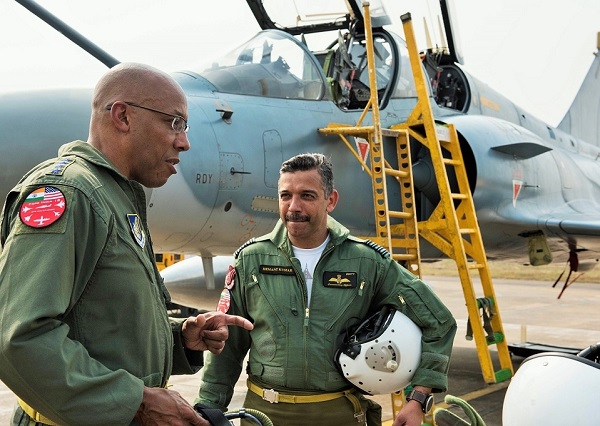New York, The top US Air Force commander for the Indo-Pacific region has said that the US-India agreement to share highly sensitive information will help grow military ties and the different origins of the aircraft of the two countries were not a barrier to working together.
Gen. Charles Q. Brown Jr., the US Pacific Air Forces commander, told the media here on Monday that the Communications Compatibility and Security Agreement (COMCASA) “opens the door to increase our information sharing particularly on some of the airplane, air aspects”.
Therefore, the defence cooperation between the two countries, particularly in air, “is going to grow”, he said.
“It’s going to take a bit of time… But it is definitely, I would say, on a positive trend.”
Brown, who is the air component commander for US Indo-Pacific Command, said that in his meeting in New Delhi with Air Chief Marshal Birender Singh Dhanoa and Defence Ministry officials, “what I do see is an interest to increase some of the air aspects of what we do with India. India does have US capabilities, C-17s and C-130s, and so that was part of the discussion topics”.
Boeing C-17 Globemaster III and Lockheed Martin C-130J Super Hercules are huge military transport aircraft used for both ferrying defence personnel and supplies as well as humanitarian aid.
Equipment coming from different countries, especially Russia, are not barriers to Indian and US Air Forces working together because interoperability is not only about equipment but involves operational strategies, Brown said.
“Naturally it is bit easier when it is (all) US, a little more difficult if it is European, but usually if it is a European NATO partner, there is way to do that”, he said in an answer to a question. “Russian is much more challenging as you might imagine.”
However, “when I talk about interoperabilities, it is not just the equipment we buy, it is our tactics techniques and procedures – how we operate — even if it is a different piece of (equipment) coming from a different country”, he said.
Despite the differences in the equipment, it is about “using the same kind of concepts”, he said.
During the Cope India 19 joint India-US exercise in December in Kalaikunda and Panagarh, West Bengal, US F-15 Eagles operated alongside India’s Russian Sukhoi 30s and British-French Jaguars built or assembled in India, and French Mirage 2000s, while the American-built C-130Js were common to both air forces.
Brown said that the feedback for the Cope India 19 exercise showed it was well-received by air force personnel from both countries.
The exercise over three weeks was a “kind of a building blocks approach from very basic to more complex missions”, he added.
He said that an important aspect of the exercise was to build relationships between the personnel of both countries.
It “is not only the exercise, (but) what they do outside the exercise, to go on long bike rides, to go do a project in one of the local communities and some of the social events build relationships”, Brown said.
One of his own priorities, he said, was developing relationships with air force and military leaders in the region.










